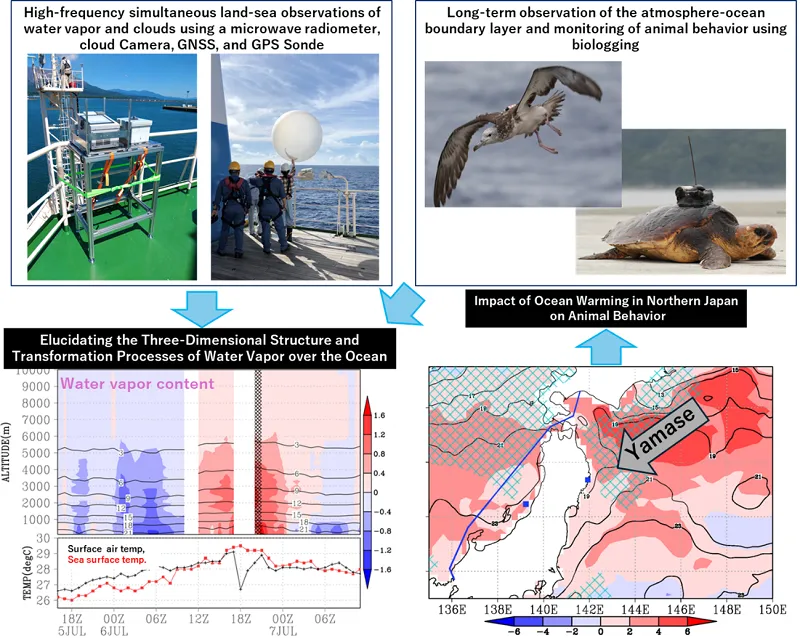A01-K102 Rapidly warming seas around northern Japan: investigating the phenomenon through ship-based and biologging observations
A01-K102
Principal Investigator
| KUWANO-YOSHIDA Akira | Kyoto U. |
Research Collaborators
| SATO Katsufumi | U. Tokyo |
| YODA Ken | Nagoya U. |
| INOUE Sota | Nagoya U. |
| HONDA Meiji | Niigata U., PI of A01-2 |
| TACHIBANA Yoshihiro | Mie U., Co-I of A01-2 |
| NISHIKAWA Hatsumi | JAMSTEC, Co-I of A01-2 |
| KOMATSU Kosei | U. Tokyo, Co-I of A03-7 |
In recent years, the sea surface temperature (SST) around Japan has been rising at twice the global average rate, leading to an increase in heavy rainfall disasters. Notably, the rise in SST around northern Japan is unprecedented worldwide, resulting in heavy rain and typhoon disasters that exceed the limits of existing infrastructure, which was developed based on past empirical data. Additionally, the weakening of the cold northeasterly wind known as Yamase has led to a reduction in lower-layer clouds, further accelerating the rise in SST. This increase in SST also affects marine ecosystems; for instance, seabirds from the Tohoku region, which traditionally forage along the Tohoku coast and southern Hokkaido, have been observed flying as far as the Sea of Okhotsk, while sea turtles have migrated northward to the waters off Hokkaido.
In this study, we will conduct high-frequency simultaneous vertical observations over both land and sea, in coordination with shipboard observations carried out by the planned research groups. By utilizing a compact microwave radiometer, radiosondes, and biologging techniques, we aim to elucidate how the high SSTs around northern Japan influence moisture supply from the ocean to the atmosphere, the distribution of atmospheric water vapor over the sea, and the behavior of marine animals. Through these efforts, this study will contribute to the research area’s overarching goal of understanding the foundation of human survival and predicting future environmental changes.

